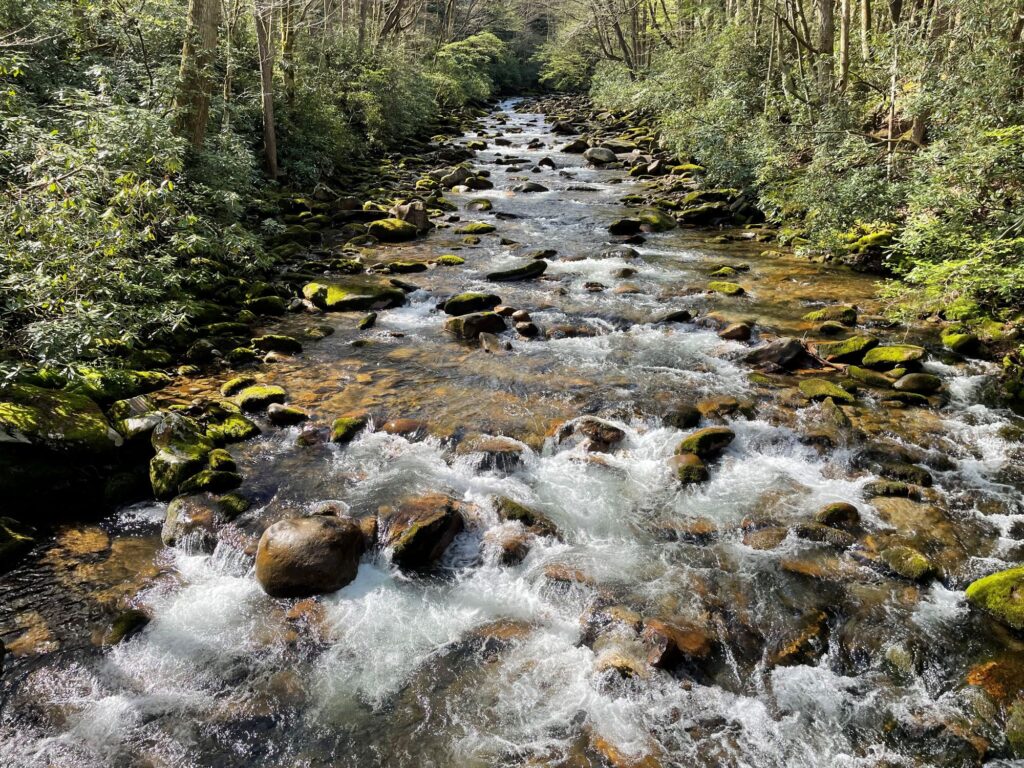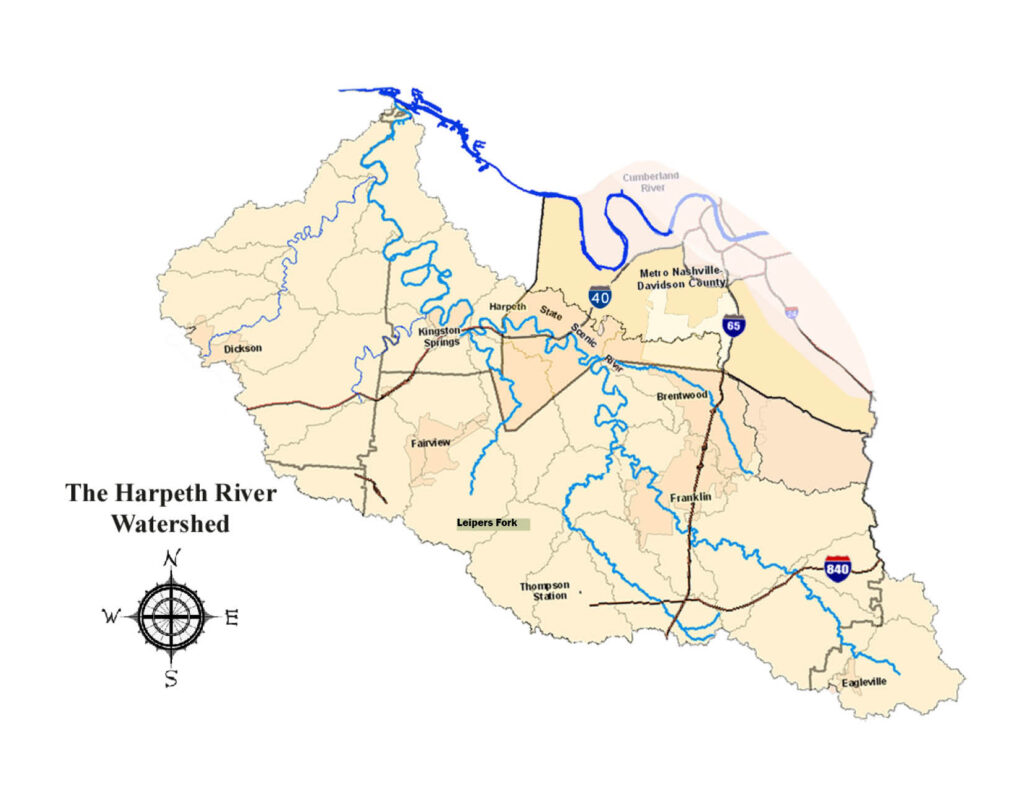Harpeth River

The Harpeth River flows 125 miles from its headwaters in Eagleville to its confluence with the Cumberland River.
A portion of the Harpeth is designated a State Scenic River as it flows through the Nashville metro area, and a series of state, county, and city parks along the Harpeth connect natural, archaeological, and historic sites.
Due to its natural beauty and proximity to a major urban area, countless paddlers, anglers, and other outdoor lovers enjoy the river every summer.
The Harpeth River and its tributaries are home to rich freshwater biodiversity, including more than 50 species of fish and 30 species of mussels. Several of these species are classified by Tennessee as rare and in need of management, and two mussel species are protected under the Endangered Species Act. The Harpeth also played a major role in the Battle of Franklin 150 years ago, a battle that determined the outcome of the Nashville Campaign, and ultimately the western theater of the Civil War.
Threats To This River
The Harpeth River flows through the heart of downtown Franklin, the 14th fastest growing city in the United States, and traverses Williamson County, one of the fastest growing counties in Tennessee. This rapid development has already caused harm to the river from adding treated sewage, increasing stormwater runoff, and withdrawing water. If not managed responsibly, it could cause irreparable damage to the river.
Since the state of Tennessee first issued its required 303(d) list of impaired waters in 1999, the Harpeth has been listed because the river frequently fails to meet water quality standards for fish and aquatic life and recreational use during periods of low summer flow. Nearly 60 percent of the entire length of the main river is impaired, along with 37percent of its more than 1000 miles of tributary streams.

Let's stay in touch!
We’re hard at work in the Southeast for rivers and clean water. Sign up to get the most important news affecting your water and rivers delivered right to your inbox.
The river’s impairment is caused by dangerously low levels of dissolved oxygen driven by high concentrations of nutrients – particularly phosphorus – that fuel oxygen-hungry algal blooms that can lead to toxic conditions. Primary sources of nutrient pollution include treated sewage effluent and stormwater runoff. During summer months when the river experiences natural low flows, sewage effluent can dominate the river and significantly contribute to the total nutrient load downstream from the City of Franklin’s sewage treatment plant. For example, on average in August 2014, downstream from the sewer plant, 32 percent of the river’s total flow came from treated effluent that contained phosphorus levels 3.5 times higher than the river’s levels just upstream, according to the city’s own data.
The pollution problem is exacerbated by the City of Franklin’s aging 2 million gallons-a-day drinking water plant that withdraws water from the river not far upstream from its sewer plant. The city wants to replace its plant even though the Harpeth is too small to supply the city with its drinking water needs. The city’s primary, and most reliable, source of drinking water is a substantial utility that produces water from the much larger Cumberland River. This utility provides three-fourths of the city’s annual demand and up to 100 percent during the summer or when the city’s plant is down. Meanwhile, the city withdraws up to 20 percent of the Harpeth’s flow during low flow periods. According to the state, this is problematic for fish and aquatic life, and reduces the capacity of the river to handle the city’s treated sewage discharges and other pollutants downstream.

